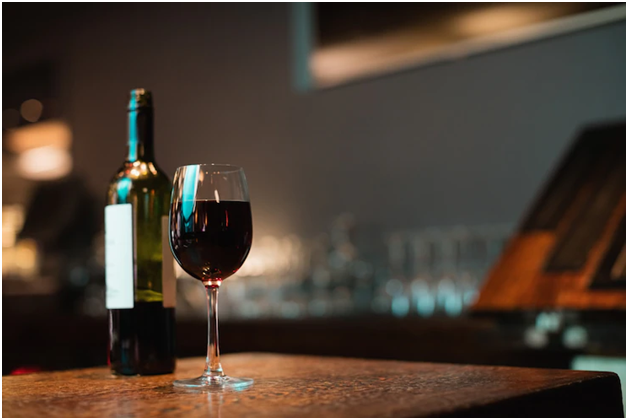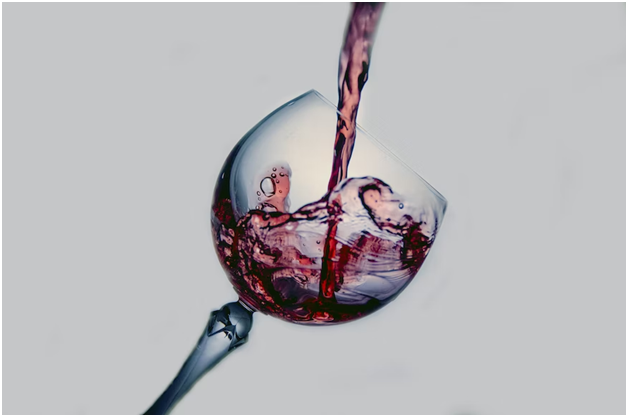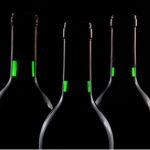There is nothing like a nice bottle of wine, regardless of your level of wine expertise or interest in the range of flavors. Wine can give a sense of elegance to any situation, whether you have it with a meal or just resting at home and sipping on it.
Finding a wine that tastes fantastic can be a chore, but enthusiasts will go considerable distances to discover the ideal fit for their taste buds. But what if you do not know anything about wines? Is it possible to determine what makes a wine taste excellent before pouring it, especially if it has different flavors like Crown Royal Peach, Strawberry, Apple, Caramel, etc.?
In this blog, we will guide you in your search for good wines and explain how, by paying close attention to specific elements, you may learn much more about wine than just what’s written on the label.
What Sets A Fine Wine Apart From A Cheap Wine?
Generally, you can taste the wine to determine whether or not its qualities are appealing enough for a refill. If you have the chance, sip wine while keeping the flavor’s length and intensity in mind. Each sip of “good” wine will pamper your taste buds and leave a long-lasting flavor.
A wine’s flavoring components are well-balanced if you enjoy the taste of it, whether it is dry or sweet. It only takes one dominant element to upset the harmony and produce an unappealing wine. The most outstanding wines have a balanced blend of fruit, richness, tannin, minerals, acidity, and alcohol.
Following that, the quality of a wine is determined by how well it performs against a set of (more or less) defined performance standards established by experienced, qualified specialists. These requirements entail enigmatic terms such as balance, depth, complexity, length, finish, and trueness to type, which we will describe in detail in the following sections. By the way, none of these ideas is quantifiable in an objective sense.

Balance
Sweetness, acidity, and tannin indicate three of the significant wine compounds. Alcohol comes in fourth. Alcohol is an essential factor in wine quality and is one of the main reasons we frequently desire to drink a glass of wine.
The relationship between these four elements is what we call balance. When nothing stands out as you sip the wine, such as a sharp tannin or an excessive sweetness, the wine is considered balanced. Most individuals find most wines to be well-balanced.
Professional tasters are aware of their own quirks and account for them while evaluating wines. However, if you have food intolerances, such as a strong dislike for anything acidic or a refusal to consume sweets, you can find certain wines to be imbalanced. They are imbalanced for you if you believe they are imbalanced.
Depth
Depth is another arbitrary, immeasurable characteristic of fine wine. When a wine tastes complex and multi-dimensional in your mouth rather than flat and one-dimensional, we say it has depth. A ” flat ” wine can never be terrific, but an organic wine can be great because it may have a deep flavor.
Examining the wine’s depth of flavor is as easy as holding it in your mouth and thinking about what you’re tasting as you swirl it around. Undoubtedly, the wine will taste like fruit, but is that all it has to offer? Does the fruit flavor have any other layers on top of it? For white wine, how about a hint of almonds or grapefruit? For a red, how about a touch of chocolate or coffee? This would imply a wine with many facets and layers of flavor.
Wines with complex flavors are a great deal of fun to drink, and if you do so while eating supper, you’ll observe how the wine evolves in your glass as the food changes, bringing out progressively more scents and sensations. A wine with a rich flavor profile is unquestionably a contender for “excellent” wine.
Complexity
There is nothing wrong with a straightforward, uncomplicated wine, especially if you like it. However, a complex wine that continually reveals new aspects and consistently leaves you with a unique flavor or impression is typically considered higher quality.
The term “complexity” is typically used by specialists to denote that a wine has a variety of scents and flavors; nevertheless, some consumers use the phrase in a broader (albeit less accurate) sense to describe the overall impression a wine leaves on the palate.
A glass of wine should develop your wine palate and take you on a journey. The difficulty of identifying the precise characteristics of a wine should be able to tell you whether it is high-end.

Image: Pexels
Trueness To Type (Typicity)
Knowing how that type of wine is meant to taste is necessary to determine if a wine is true to its kind. You must be familiar with the standard attributes of wines from the main grape varieties and those from the world’s traditional wine areas.
For instance, the Cabernet Sauvignon grape often tastes and smells like black currants, and the Pouilly-Fumé white wine from France typically has a faint gunflint scent.
Length
When we say a wine is long or short, we aren’t talking about the bottle’s size or how fast we consume it. The length refers to a wine that seems to cover the entire palate rather than halting midway through your tasting of it. You can taste it throughout the whole length of your tongue.
Many wines available today are straightforward on the palate; they leave a strong impression as soon as you sip them, but they don’t linger in your mouth. They are, in other words, brief. An extended aftertaste in wine is referred to as length more frequently now. To avoid misunderstanding, mouth length can be referred to as palate length. A long palate is a surefire indicator of superior quality.
Finish
The finish or aftertaste of a wine is the imprint it leaves on the back of your tongue and down your throat when you drink it. At that moment, a good wine still has flavors you can detect, such as fruitiness or spice.
The finish lasts longer, the more persistently satisfying flavor perception. In her book “Wine for Dummies“, Ed McCarthy stated that some wines might have a hot or bitter aftertaste due to tannin or high alcohol content, respectively. Another possibility is that wine may not have much to say about itself after you’ve swallowed it, which indicates that it is presumably not a particularly good wine.

Are expensive wines necessarily of higher quality?
Price is a problematic deciding factor in the argument between good and terrible wine. The cost of wine is primarily determined by how much attention and care is put into the fermentation process. However, winemakers could change the price of the wine out of avarice.
In general, expensive wines cost more upfront than cheap wines, but you must always err on the side of caution when using this rule. The cost of winemaking is up to the individual winemakers, and the price of wine might indicate its status and general accessibility.








